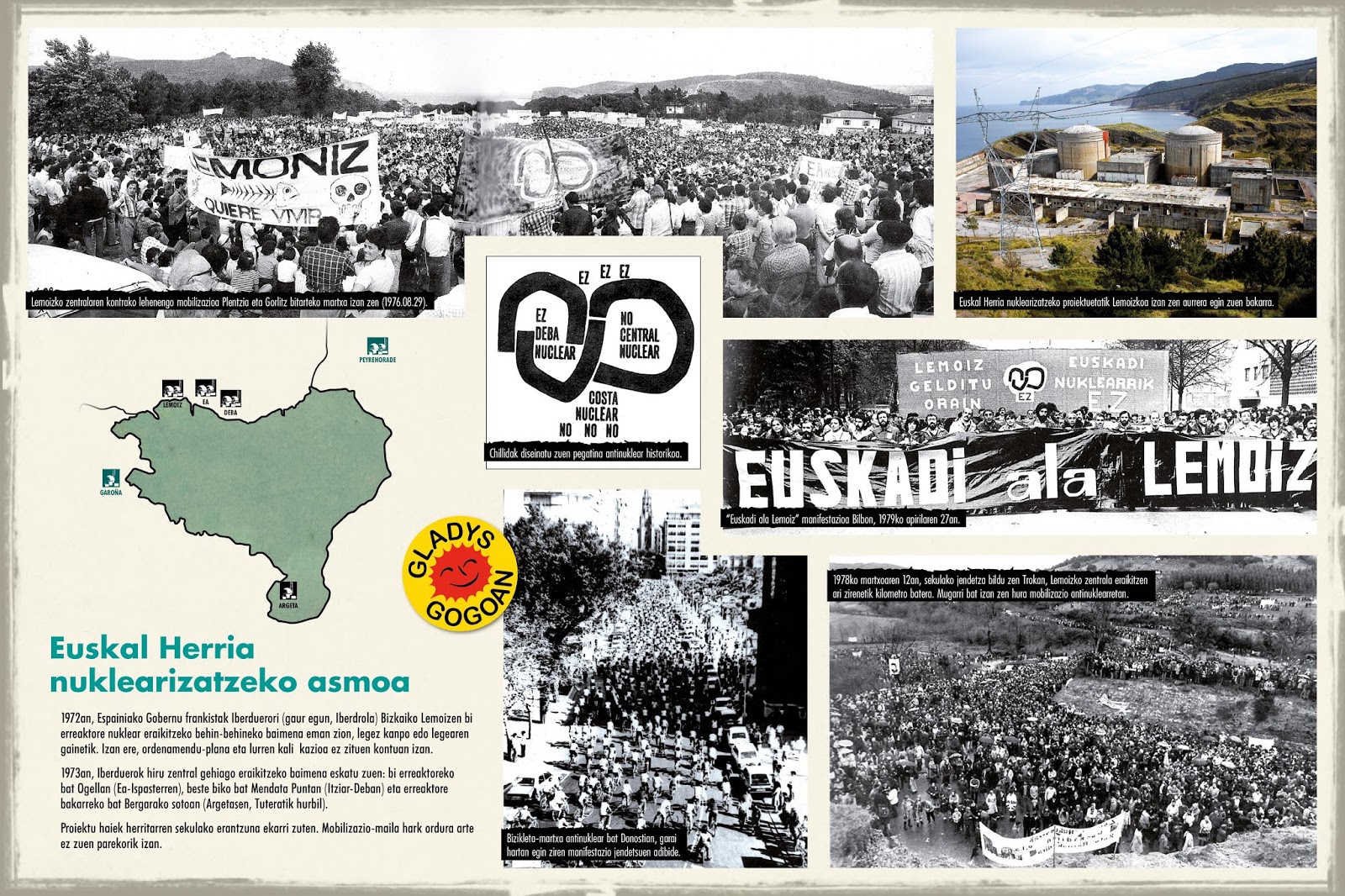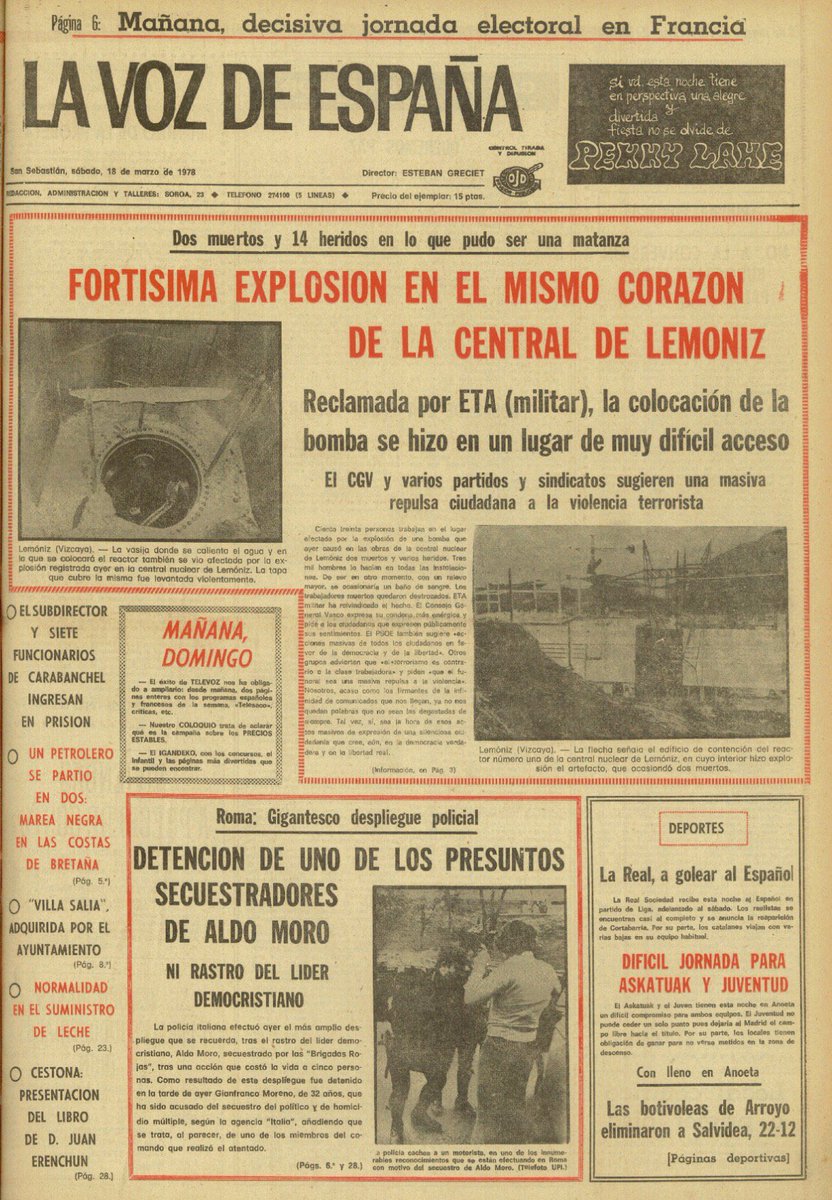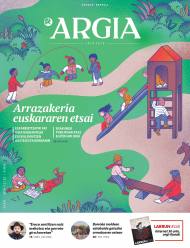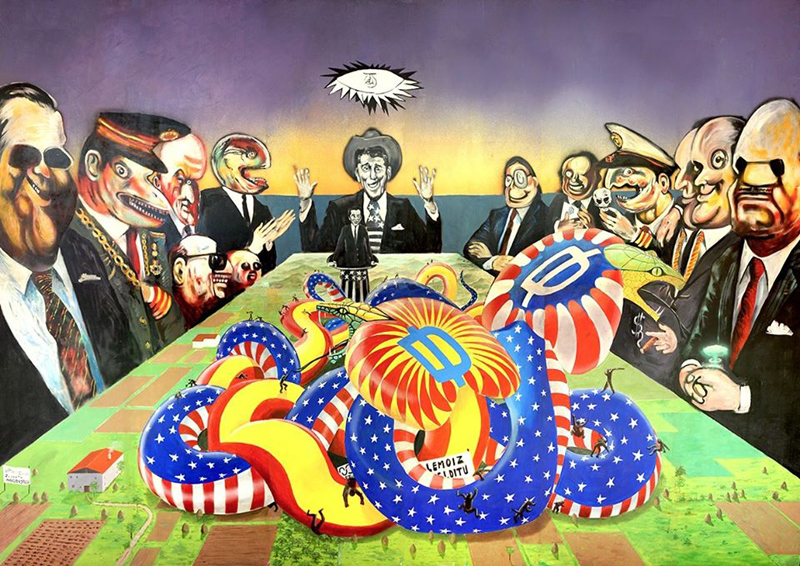That shameful silence around Lemoiz's nuclear.
- The journalist, artist and activist La Parisienne Liberée published in September the book Le nucleaire, c’est fini (“The Nuclear, Is Fucked”) which says on its cover: “After the break-up of major nuclear companies, there are now countless storms, floods, droughts and fire that directly threaten nuclear power. Apparently, the climate has decided who it is on its side: it is antinuclear.

But can we think that financial and climate problems will end up with production that is closely linked to political and military interests? The atomic industry is built entirely on the basis of a ‘nuclear silence’, the memory of the movements that have finally faced nuclear, as demonstrated by the fight against the Lemoiz plant in the Basque Country, very unknown in France.” La Parisienne Liberée (LPL) is short in: Not only in France, but also in the Basque Country, young generations are unaware of the battle of Lemoiz and many older people would prefer to forget it, in short, because of a coexistence with more anti-terrorist pacification.

The journalist, poet and Parisian singer of origin Fleur, resident today in Iparralde, has told Radio Kultura that he had been singing in the cabaret for several years and that at the time of the lehendakari Sarkozy decided to submerge the songs in today’s politics. When he created his songs he used many titles of Le Parisien Liberé (Parisien Askatua), so he adapted his artistic name. LPL is known for her video clips she writes, sings and produces on current issues in collaboration with her partner Mimoso. Some Basques from Hegoalde will meet L’Injustice d’Altsasu (Injustice of Altsasu), who also holds subtitles in Basque.
Le nucléaire, c’est fini has offered 52 of its 230 pages to the section Lemoiz et le pays non nucleaire (Lemoiz and the non-nuclear country). From the history of the Lemoiz power plant and the materials published – and today discarded – on that struggle of 1970 and 1980, the LPL will draw the main lines of a great crisis that young Basques would have to know in their entirety, the story of the fossilized monster in Basordas: Under the last Franco Energy Plan, the Basque Country today had four plants (Lemoiz, Itziar, Ea-Ispaster, Tudela) in which they could count between 7 and 13 atomic reactors.
The LPL has perfectly described the epic mobilization against the plan that would jeopardize the very survival of Euskal Herria, from the origin of the nuclearization of Spain (Franco intended to obtain an atomic bomb in the 1960s…) to the point that it was the first step of a Euskadi nuclearized in the conflict against Lemoiz, without running away from the spontaneous movement of the peoples, from the spontaneous movement. The chronology includes the efforts of Iberduero, the actions of the movements, the mass demonstrations that are now surprising, the disobedience and sabotage, the flags and shouting of Martín Zabaleta in the Everest, the 12 people killed in armed acts (workers of the plant, heads of technicians, and militants of ETA and the Revolution), the sad behavior of the newly occupied autonomic political institutions.
On page 170, LPL presents readers to the Basque environmentalist militant Gladys Del Estal, killed in a peaceful demonstration in Tudela in 1979 by civil guards, and for this he has collected data from the report Eguzki murdered the daughter of the Sun published in March of this year, in recognition of Urko Apaolaza Ávila.

But beyond the appeal that the section dedicated to Lemoiz has for the Basques, Le nucléaire, c’est fini is a book worth translating into Basque. In the end, the LPL wants to respond to that: How is it possible in France, the most nuclearized country in the world, for the public to be so unaware of the risks they live every day under the atom? The key lies in the nuclear silence (silence nucleaire), the absolute silence that the nuclear industry, which includes the army owner of the atomic bomb, has imposed on the whole of society. Well documented examples have been explained in the LPL book.
Among the accidents and emergencies that have been hidden is a scare that occurred in the area of Burdeos.Los on 27 and 28 December 1999 was near a disaster at the Blayais atomic power plant, when the terrible flooding that suffocated those areas endangered the paralysis of its four reactors. Let us remember that it was not the Fukushima earthquake, but the flood that came from the sea that made it explode. If only one of the four Blayais reactors had exploded, the Basques would have guessed as well: Baiona is 209 kilometers away, the same Bilbao at 287 kilometers, you will be confirmed by Google Maps.

"Larunbatean Gladys gogoratu eta borrokan jarraitzeko gogoak ditugula ospatzeko bilduko gara", adierazi dute antolatzaileek.
Lore bakar batetan posatzen ez den erlea dugu Jose Allende. 'Zentral nuklearren kokatze politika' barazko tesia egitenz gain, lurralde... [+]
Hori da Lemoizen aldeko eta kontrako guziok PEN berria irakurrita esandakoa... [+]
Euskal Herrian eraiki nahi zituzten lau zentral nuklearren aurkako borroka babesteko, Jose Luis Zumetak, Karlos Zabala Arrastalu-k eta Bixente Ameztoik Lemoiz gelditu horma-irudia sortu zuten 1980an. Duela gutxi, Bilboko Arte Ederren Museoari eman diotela argitaratu zuen... [+]
Egun hauetan gertatukoarekin artikulu bat idazteko baino, enziklopedi oso bat idazteko gaia badago. LEMOIZko zentrala dela eta ETAk Joese Mª Ryan injiniadorea bahitu zuen.
Berehala egin zuten eskabidea: injiniadorearen truke Lemoizko zentrala desegitea eskatzen zuten... [+]



















